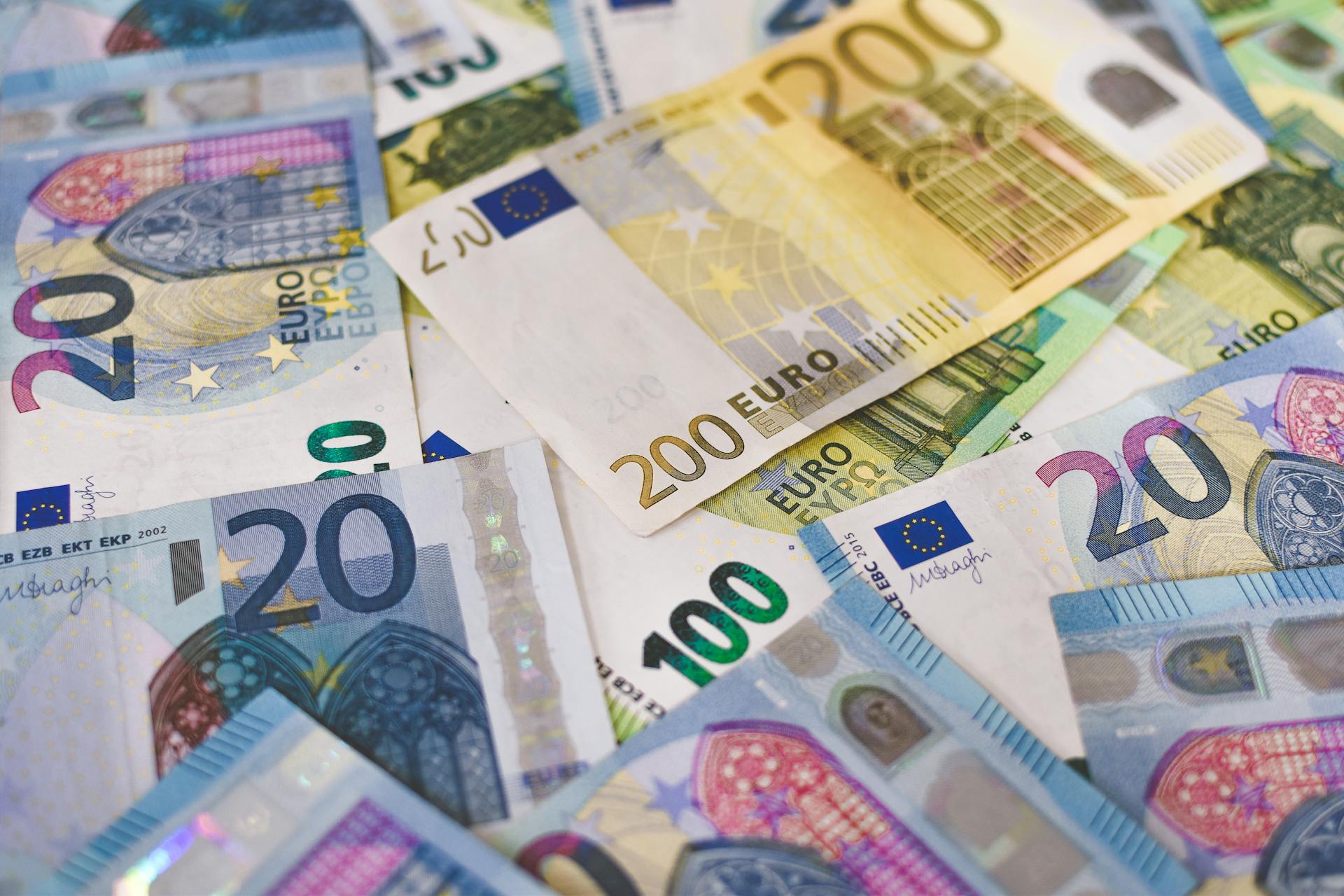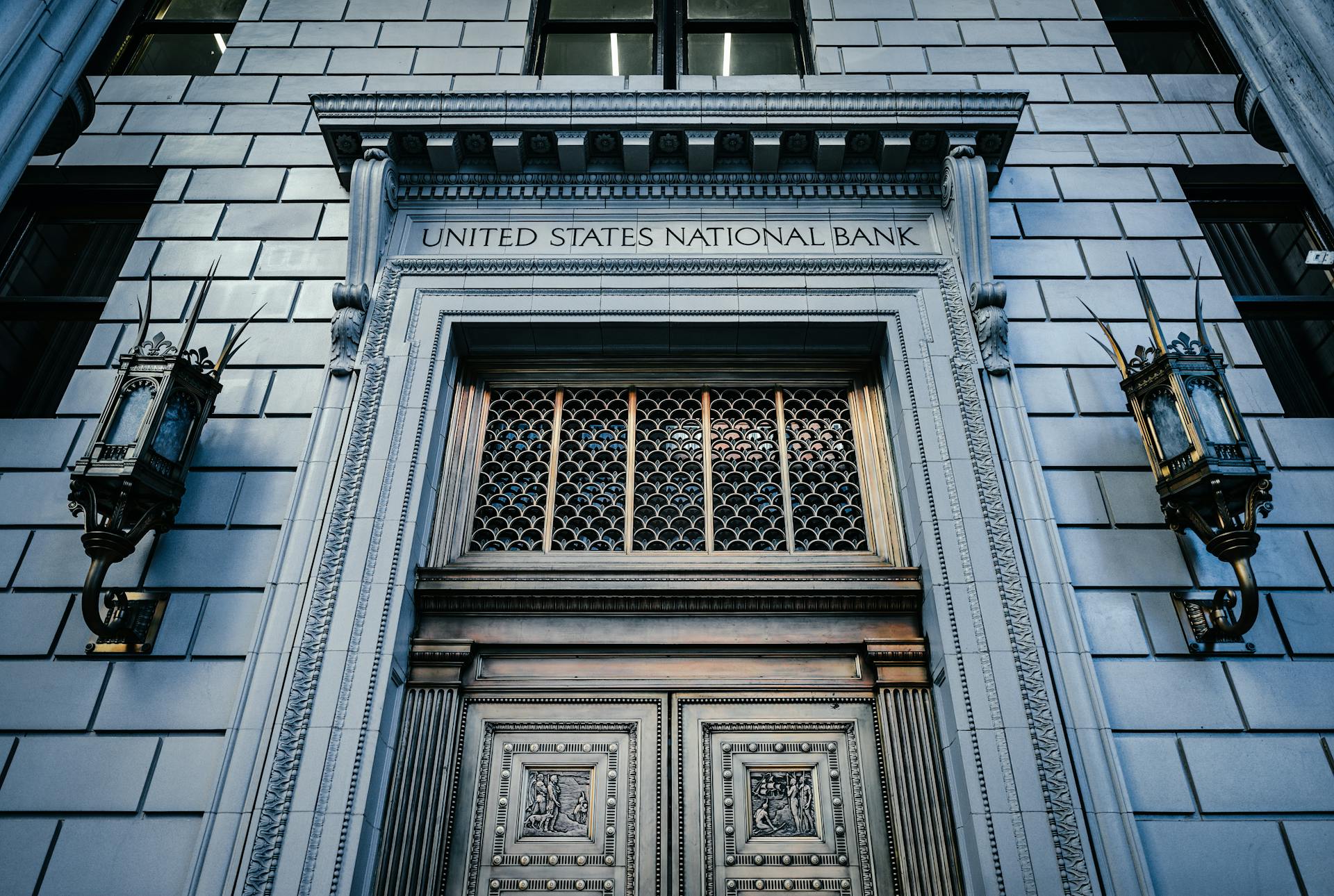
The Belgian franc was the official currency of Belgium from 1832 until 2002.
It was divided into 100 centimes.
In 1999, the Belgian government decided to adopt the euro as its official currency, replacing the franc.
This decision was made in preparation for the introduction of the euro in 2002.
On January 1, 2002, the euro replaced the franc as the official currency of Belgium.
The exchange rate was fixed at 1 euro = 40.3399 Belgian francs.
Curious to learn more? Check out: Banking in Belgium
Belgian Franc History
The Belgian franc has a rich history that spans over six centuries. It was first introduced by King John II in 1360, and it was a national currency in France for more than six hundred years.
The Belgians adopted the franc in 1830, after gaining independence from the Netherlands. This was largely due to the strong economic influence of France and the desire to distance themselves from their Dutch heritage.
The Belgian franc was used as the official currency of the Kingdom of Belgium from 1832 to 2002, when it was replaced by the euro. During this time, the franc was divided into 100 centimes, and it was also used in Luxembourg, although it wasn't as widely accepted.
Here's a brief timeline of the Belgian franc's history:
Numismatics
The numismatic history of Belgium is a fascinating story that spans thousands of years. The Nervii tribe is credited with producing the first Belgian coins between 150 and 50 BC.
Roman and Frankish coins were later issued in Belgium, and a number of mints were established in the territory beginning during the reign of Louis the Pious (814-840).
The numerous states and cities in and around Belgium produced their own coinage systems in the Middle Ages. A unified currency system was established during the regnancy of Duke of Burgundy Philip the Good (1419-1467), which was based on the gros, equal to 12 deniers or 24 mites.
A new system of coinage was introduced in 1612, during the reign of King Philip II of Spain. This system was primarily based on the sovereign d'or and the sol.
Here's a brief overview of the different currencies used in Belgium:
Belgium began using the French franc after its territory was annexed to France in 1795. The franc was issued in Belgium until the territory became a part of the United Kingdom of the Netherlands in 1815, and the Dutch gulden became its official currency.
Belgian Franc Pre-WWI

The Belgian Franc Pre-WWI was a time of significant change and development for the Belgian currency. Before the world wars, the Belgian currency was issued in coins from 1830 to 1851.
One franc could be divided into 100 centimes, with centimes issued in copper coins in denominations of 1, 2, 5, and 10. Silver coins issued in 1832 were worth ¼, ½, 1, 2, and 5 francs, while gold coins were valued at 20 and 40 francs.
During the world wars, almost all coins were minted using zinc. The use of zinc in coin production highlights the resourcefulness of the Belgian economy during times of conflict.
The first paper trail of Belgian money was left in 1851, when the big leagues of the Belgian economy decided to print 20, 50, 100, 500, and 1000 francs.
Belgian Franc Denominations in the 1990s
During the 1990s, the Belgian Franc had a variety of banknotes featuring notable historical figures from Belgium.
King Albert II ruled Belgium during this time, and his portrait appeared on the 10,000 francs banknote, which was a significant denomination that was rarely used.
James Ensor, a famous Belgian expressionist painter, was honored on the 100 francs banknote, which was a red-colored note.
Adolphe Sax, the inventor of the saxophone, was depicted on the 200 francs banknote, which showcased his contributions to music.
Rene Magritte, a renowned surrealist artist, was featured on the 500 francs banknote, highlighting his unique style of painting ordinary objects in unusual contexts.
Constant Permeke, another important expressionist painter from Belgium, was portrayed on the 1000 francs banknote, which had a brown-colored backdrop.
Victor Horta, a Brussels-based architect and one of the founders of the Art Nouveau movement, was honored on the 2000 francs banknote, which recognized his preserved buildings that tell the story of the city.
Here's a brief overview of the denominations:
Current and Historical Currency
The Belgian Franc may be a thing of the past, but it's still interesting to know its history. The story of the Belgian franc began in 1830, when Belgium gained its independence from the Netherlands.
Explore further: Does Canada Have Their Own Currency
The Belgian franc was first introduced by King John II in 1360, and it was a national currency in France for over six hundred years. The strong economic influence of France made Belgians switch from the Netherlands' guilder to the Belgian franc.
Belgium used the Belgian franc until 2002, when it was replaced by the euro. The transition to the euro happened in 1999 and lasted until 2002, and Belgians were not as reluctant to switch as were Italians.
The euro was introduced in 1999, and Belgian euro coins minted after 2013 have the portrait of King Philippe. Previously, they depicted an effigy and monogram of King Albert II.
Explore further: Does France Use the Euro for Currency
Which Currency is Used in Belgium Today?
Belgium uses the euro as its official currency, just like many other EU countries. The euro was adopted in 1999 and became the standard currency in 2002.
The Belgian franc banknotes can be exchanged indefinitely in banks across Belgium, but the coins were discontinued in 2004 and can no longer be exchanged.
For more insights, see: Currency before Euro in Germany
Belgian Euro Coins
Belgian Euro Coins have a unique design feature - they have one common side and one side for national symbols. The common side is shared among all eight Belgian coins.
The Royal Belgian Mint previously produced proof sets, but the Royal Dutch Mint has taken over this task in recent years. This change has led to the Royal Dutch Mint issuing all commemorative Belgian coins.
One notable commemorative coin is the 2 euro coin from 2006, which depicted The Atomium - the symbol of Brussels. This coin showcased an important piece of Belgian culture and history.
Belgian Euro Coins minted after 2013 feature the portrait of King Philippe, while those minted before 2013 depicted an effigy and monogram of King Albert II.
If this caught your attention, see: Most Common Currency
Frequently Asked Questions
What is the new currency of Belgium?
The official currency of Belgium is the Euro. Introduced in 2002, it has been the country's standard currency ever since.
Featured Images: pexels.com


